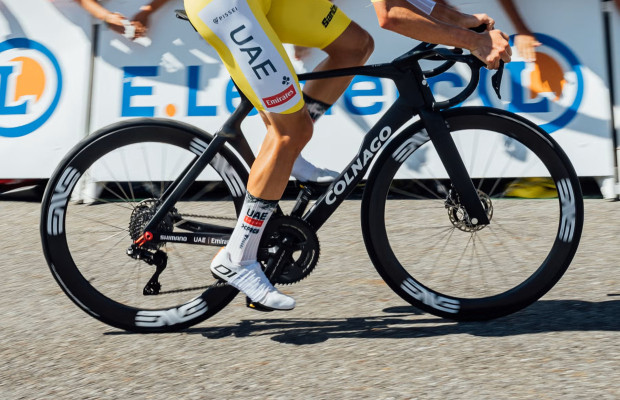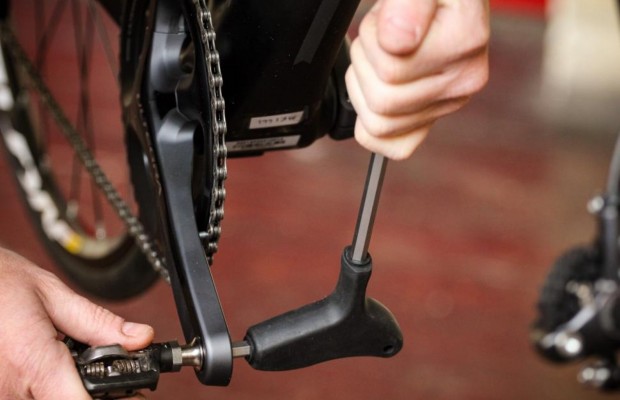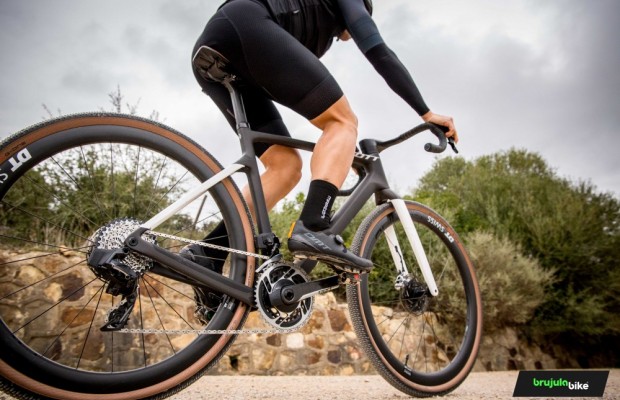This study states that high cadence has no benefit for amateur cyclists
Keeping the position and avoiding the sway that occurs at high cadence would increase energy expenditure and reduce pedalling efficiency in recreational cyclists.

Forcing yourself to pedal at a high cadence is not necessarily the most efficient thing to do
A study published in the International Journal of Sport Medicine, by Dr Federico Formenti of King's College London, claims that cycling at high cadence is not beneficial, especially at high intensities.
In recent years, using high cadences has become one of the main recommendations for beginning cyclists. The main reason for this is that it reduces the muscular work of the legs, a task that is taken over by the cardiovascular system, which is much more resistant to prolonged effort.
RECOMENDADO

Black Friday Garmin 2025: the ultimate guide to choosing your GPS at the best price

How to wash your cycling clothes? 10 keys to make them always look new

The real importance of signing up for a race

The best road bikes of 2025

How to change the pedals of any bike in 5 steps

The best gravel groupsets of the moment

The wider range of gearing has helped to make it easier to choose the best cadence at any given moment. Gone are the days when the bikes had 5 or 6 sprockets and the chainrings were inevitably a 52/42 combination, which meant that you had to climb the mountain passes with your kidneys and made this sport something only within the reach of those with very good training.
Nowadays, with 12-sprocket cassettes and combinations of chainrings and sprockets that even allow us to have a 1:1 ratio, the rider has more margin to find the combination in which he/she is most comfortable.
As is usual in road cycling, competition has also influenced the cadence used by cyclists. It was not until Lance Armstrong arrived with his famous grinder that we began to see cyclists on the road trying to emulate the Texan with impossible pedalling cadences.

The study conducted by Dr. Formenti involved a sample of 9 recreational cyclists aged between 21 and 55 years who were made to pedal at a cadence of 40, 50, 60, 70, 80 and 90 pedal strokes per minute for 4 minutes each interval at the intensity of their ventilatory threshold while their physiological parameters were monitored.
It was observed that the force applied to the pedals decreased as the cadence increased, which is to be expected, since one of the main reasons for using high cadences is precisely to free the leg muscles from work. However, a clear increase in heart rate was observed, which implies a greater expenditure of energy, detecting an increase of 15% at 90 pedal strokes per minute.

Dr. Formenti pointed out that pedalling above 90 bpm may be beneficial for professional cyclists, but it is inefficient when it comes to recreational cyclists, where the ratio between the oxygen our system is able to provide and the oxygen demand of the muscles is reduced.
The head of the study pointed to the possible reasons for this reduction in efficiency as the extra oxygen demand of the muscles in charge of postural control to avoid the swaying generated by pedalling at higher cadences.
Professional cyclists have a pedalling cycle built up over years of training and work the stabilising musculature conscientiously, which allows them a greater economy of pedalling with which they can maintain high cadences without wasting energy.

In any case, as is usually the norm in this type of study, the small size of the sample used in the study and the fact that the cyclists were classified as recreational cyclists makes it difficult to extrapolate its conclusions to the heterogeneous cycling population, which ranges from those who cycle only once or twice a week to those who have planned training sessions practically every day.
The current trend is for cyclists to be able to perform efficiently over a wide range of cadences, as there will be occasions when we cannot use the cadence we are most comfortable with, for example when we have to climb a steep mountain pass and the available gearing does not allow us to pedal with agility or, at the other extreme, if we are trying to catch a group on a downhill section where the longest gearing we have is not enough to ride faster.